
Volume XIII, Issue VII
Apollonius
By Bob Kirchman
Copyright © 2017, The Kirchman Studio, all rights reserved
Chapter 1: The Challenge of Moon and Mars
The first man in space, Yuri Gagarin, was reported to have said: “I went up into space, but I didn’t encounter God.” That story was often repeated by the Atheistic Soviet Regime that sent him there and by the Western powers as they refuted the claims of the Soviet regime. His friend, General Valentin Petrov, a professor at the Russian Air Force Academy had a different story. He said of his personal friend the Cosmonaut: “He always confessed God whenever he was provoked, no matter where he was.” Gagarin was a baptized member of the Orthodox Church. Petrov remembered Gagarin saying something quite different in fact: “An astronaut cannot be suspended in space and not have God in his mind and his heart.” It was actually Nikita Khrushchev who had mockingly said: “Why don’t you step on the brakes in front of God?” In the Cold War days the U.S. President, John F. Kennedy, deftly created the civilian space agency, NASA. The struggle to control the high ground of space became recast as a race to the moon and it captured the imaginations of millions. When Gagarin orbited the Earth, the Atheist Empire was dominating. The Russians were depending on immense boosters to go beyond low Earth orbit and when they created the larger multi-engined rocket they needed they couldn’t make it work dependably. Jim Lovell commanded Apollo 8 on a mission to orbit the moon on Christmas Eve in 1968. He read from the Biblical story of Creation. “And God saw that it was good!” The Russians had been lapped.
Apollo 11 landed on the moon and Neil Armstrong and Buzz Aldrin were the first men to set foot on another body in space!, fulfilling Jules Verne’s vision in “From the Earth to the Moon.” They actually celebrated the Lord’s Supper there in the lunar lander before they set foot on the lunar surface! It was an amazing time to be alive. Technological advances created as part of the space program enriched and saved lives as space technology found its way into other areas such as medicine. But the moon itself held no great riches. Men had come, but after Apollo 17 they never returned. Futurists often wrote about colonizing the moon or Mars as a way to ensure mankind survived. NASA, having inspired millions and having brought together incredible talents in the sciences, became another federal bureaucracy and even gave up the capacity to launch men into space. They had to buy rides to the International Space Station from their old competitors, the Russians! After the new world of the North opened up in the wake of the Bering Strait Bridge, mankind again looked to the stars. As money and goods flowed through the new world that had been opened up, there Billionaire George Apollonius was alarmed. His plans for one-world government had been thwarted by the free men and women of the North Country and in his alarm he began to lobby for the nations of the world to terraform Mars, that is make it fit for human habitation. He would have his one-world government… even if it meant building a new world!
But he lacked much of the funding necessary to do it and the engineering ability as well. NASA was but a shell of its former glory and the great advances were being made by Alaska Republic and Israel’s joint space launch complex at Cape Lisbon. Here Apollonius would seek an unholy alliance that would build a ship to take him to Mars. The Zimmerman Organization, for its part, was responding to a concern raised by the leadership of the Alaska Autonimous Republic. They wanted a platform for an enhanced version of Israel’s Iron Dome to protect themselves from rogue nations lobbing nuclear warheads. Space Station/Assembly Center 005 was the platform from which incoming missiles could be detected and destroyed. Its components were initially ferried into orbit by U.S. and Russian Boosters, but of late, the supplying of the station was being accomplished by shuttles launched from Cape Lisbon’s newly completed linear accelerator. Apollonius and Zimmerman had an odd connection, through which began their odd partnership… both were members of London’s Reform Club. Both men traveled quite a bit and were drawn to the club by its association with Jules Verne’s fictional Phileas Fogg, who enters into his famous wager there over a game of whist! Both had been recommended for membership by associates who were in the club and both enjoyed the congenial atmosphere and the fine cuisine.
How goes your work at Cape Lisbon?” Apollonius asked Rupert Zimmerman at dinner one night.
We’ve just begun linear induction launches of small shuttles to our space station.” the old man replied. “Research teams will then ascend to Space Station/Assembly Center 005. We plan to send an unmanned probe to Mars straightway. It will be far more sophisticated than Curiosity.”
Men?, will you then send human explorers?”
No, cost is way out of line with the benefits.”
I needn’t remind you, Mr. Zimmerman, that your precious free world will one day conspire to blow itself up! Where will mankind go when that happens?”
Oh, Mr. Apollonius, I don’t presume so as to think that man can thwart the designs of a loving God toward His Creation!”
Come now!, you are a world leader, even as you avoid title and publicity. You know damn well that God is just a fable for the weak. All that you see is all that there is. What would it take to convince you to team up with me to build a manned mission to Mars?”
I would have to see some benefit that made it worth the risk of human life.”
The survival of mankind is not worth the risk!” Exclaimed Apollonius.
But would you acknowledge, dear Apollonius, that there is more to this universe than you or I can see?” Here Zimmerman secretly wished his friend Jonathan Greene present, but the old man was here quite without his mentor in things unseen. It was Greene who had helped open Zimmerman’s eyes to the Truth he now sought to defend. But Greene was on the other side of the Globe, so to speak. He was in the biosphere town on Big Diomede in the Bering Strait. He was making animal pancakes for his daughter’s breakfast as it was the morning of a school day.
If they are unseen, they can be detected in other ways.” Apollonius responded.
Very well then, if you are an honest inquirer, I challenge you! And I invite you to come to Cape Lisbon and see for Yourself!”
The sun had set in London, but it was rising on Big Diomede on a brand new day. To Zimmerman’s surprise, George Apollonius accepted the offer to travel halfway around the world. “…on one condition. If I can convince you that the journey is worth the risk, you will help me organize a manned mission to Mars!”
(to be continued)
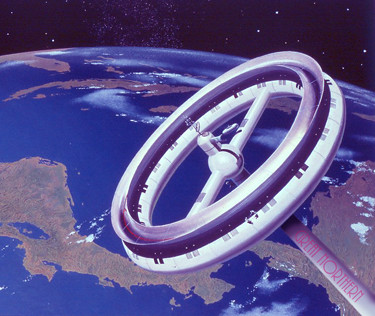
Around the World in 80 Days
By Jules Verne, Chapter V
In which a New Species of Funds, Unknown to the Moneyed Men, Appears on ‘Change
Phileas Fogg rightly suspected that his departure from London would create a lively sensation at the West End. The news of the bet spread through the Reform Club, and afforded an exciting topic of conversation to its members. From the club it soon got into the papers throughout England. The boasted “tour of the world” was talked about, disputed, argued with as much warmth as if the subject were another Alabama claim. Some took sides with Phileas Fogg, but the large majority shook their heads and declared against him; it was absurd, impossible, they declared, that the tour of the world could be made, except theoretically and on paper, in this minimum of time, and with the existing means of travelling. The Times, Standard, Morning Post, and Daily News, and twenty other highly respectable newspapers scouted Mr. Fogg’s project as madness; the Daily Telegraph alone hesitatingly supported him. People in general thought him a lunatic, and blamed his Reform Club friends for having accepted a wager which betrayed the mental aberration of its proposer.
Articles no less passionate than logical appeared on the question, for geography is one of the pet subjects of the English; and the columns devoted to Phileas Fogg’s venture were eagerly devoured by all classes of readers. At first some rash individuals, principally of the gentler sex, espoused his cause, which became still more popular when the Illustrated London News came out with his portrait, copied from a photograph in the Reform Club. A few readers of the Daily Telegraph even dared to say, “Why not, after all? Stranger things have come to pass.”
At last a long article appeared, on the 7th of October, in the bulletin of the Royal Geographical Society, which treated the question from every point of view, and demonstrated the utter folly of the enterprise.
Everything, it said, was against the travellers, every obstacle imposed alike by man and by nature. A miraculous agreement of the times of departure and arrival, which was impossible, was absolutely necessary to his success. He might, perhaps, reckon on the arrival of trains at the designated hours, in Europe, where the distances were relatively moderate; but when he calculated upon crossing India in three days, and the United States in seven, could he rely beyond misgiving upon accomplishing his task? There were accidents to machinery, the liability of trains to run off the line, collisions, bad weather, the blocking up by snow — were not all these against Phileas Fogg? Would he not find himself, when travelling by steamer in winter, at the mercy of the winds and fogs? Is it uncommon for the best ocean steamers to be two or three days behind time? But a single delay would suffice to fatally break the chain of communication; should Phileas Fogg once miss, even by an hour; a steamer, he would have to wait for the next, and that would irrevocably render his attempt vain.
This article made a great deal of noise, and, being copied into all the papers, seriously depressed the advocates of the rash tourist.
Everybody knows that England is the world of betting men, who are of a higher class than mere gamblers; to bet is in the English temperament. Not only the members of the Reform, but the general public, made heavy wagers for or against Phileas Fogg, who was set down in the betting books as if he were a race-horse. Bonds were issued, and made their appearance on ‘Change; “Phileas Fogg bonds” were offered at par or at a premium, and a great business was done in them. But five days after the article in the bulletin of the Geographical Society appeared, the demand began to subside: “Phileas Fogg” declined. They were offered by packages, at first of five, then of ten, until at last nobody would take less than twenty, fifty, a hundred! Lord Albemarle, an elderly paralytic gentleman, was now the only advocate of Phileas Fogg left. This noble lord, who was fastened to his chair, would have given his fortune to be able to make the tour of the world, if it took ten years; and he bet five thousand pounds on Phileas Fogg. When the folly as well as the uselessness of the adventure was pointed out to him, he contented himself with replying, “If the thing is feasible, the first to do it ought to be an Englishman.”
The Fogg party dwindled more and more, everybody was going against him, and the bets stood a hundred and fifty and two hundred to one; and a week after his departure an incident occurred which deprived him of backers at any price.
The commissioner of police was sitting in his office at nine o’clock one evening, when the following telegraphic dispatch was put into his hands:
Suez to London.
Rowan, Commissioner of Police, Scotland Yard:
I’ve found the bank robber, Phileas Fogg. Send with out delay warrant of arrest to Bombay.
Fix, Detective.
The effect of this dispatch was instantaneous. The polished gentleman disappeared to give place to the bank robber. His photograph, which was hung with those of the rest of the members at the Reform Club, was minutely examined, and it betrayed, feature by feature, the description of the robber which had been provided to the police. The mysterious habits of Phileas Fogg were recalled; his solitary ways, his sudden departure; and it seemed clear that, in undertaking a tour round the world on the pretext of a wager, he had had no other end in view than to elude the detectives, and throw them off his track.
(to be continued)
Art of Design Communication
Workshop Presented at the AIBD Convention
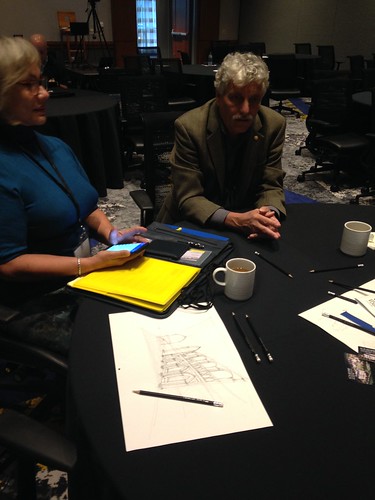
Participants in the workshop I presented at the American Institute of Building Design Summer Convention in Atlanta Georgia. Robert Browne of Cadworks Consulting, originally from Johannesburg, South Africa, especially enjoyed the drawing exercise in 'traditional media.'
The Brookwood Designs
The Kirchman Studio's Own Neighborhood

Double Rainbow over the studio window.


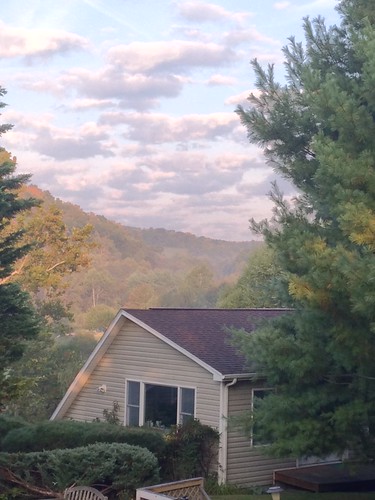

In the studio, Mr. Kirchman sought to create an environment that was conducive to inspiration.
The Kirchman Studio Brookwood Designs are of note because they are projects in the vicinity of and including the studio space. In addition to renovations to the existing house for aging in place, Mr. Kirchman designed the studio, a residence next door and a shop/work-van garage in the form of a barn. The designs are of note because they attempt to honor the region's agricultural heritage and a very nice stone church by the firm of T. J. Collins, visible from the neighborhood. The residence draws from the simplicity of German stone architecture. The stonework itself is by mason: Lewis Wright.
The Patterson Residence



The Barn (Shop and Garage)
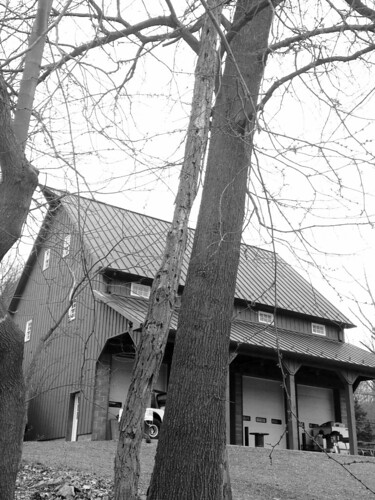
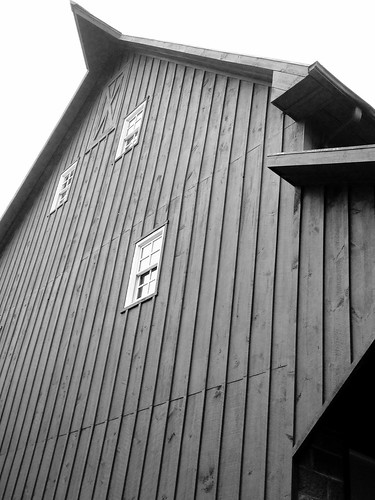
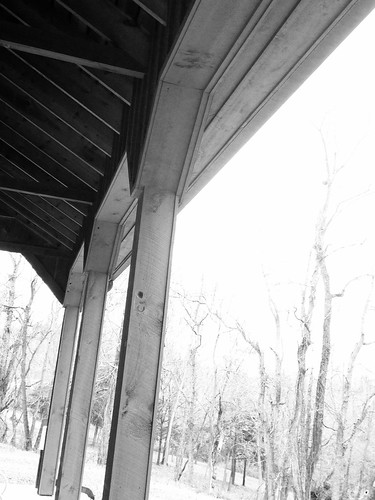
The Studio

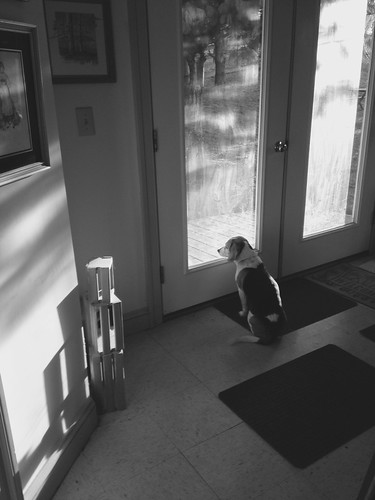
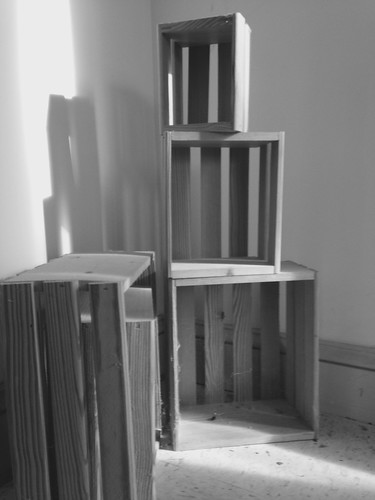

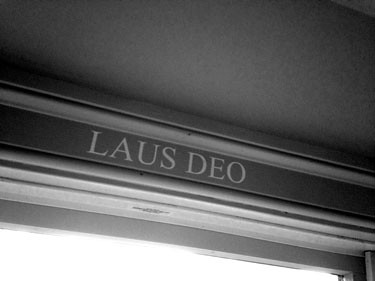


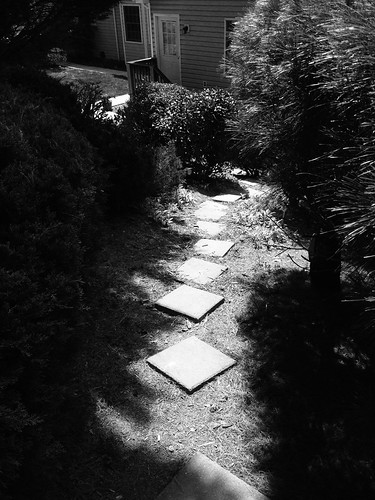
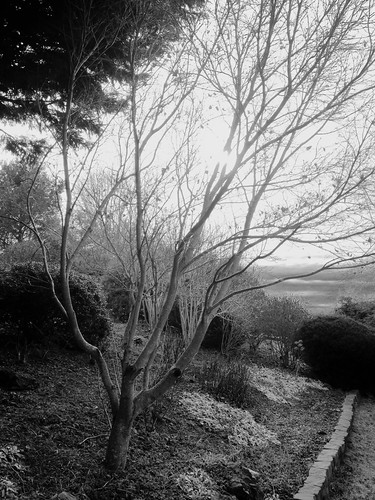
House in a House
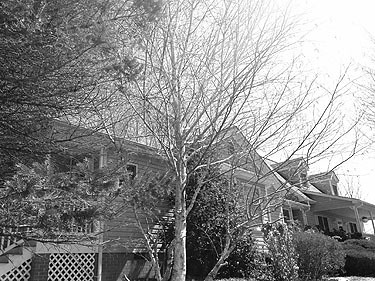
Here the garage is converted into a small house within a house with its own discreet separate entrance. It also has its own kitchenette. The perfect solution for multi-generational living.
Barbour Colonnade
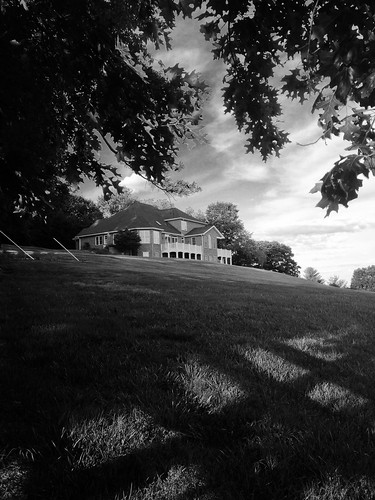
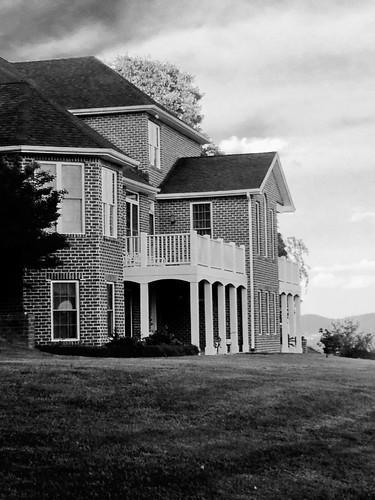

This was a planbook house built on the highest point in Brookwood. The builder turned the house so that the 'back' faced the road and the deck was sitting on skinny 4" x 4" posts. This is my design to add presence to the elevation facing the neighborhood.
________________________________________
Residences in Albemarle County
Greenwood Residence

This was also developed as a house within a house concept to house the client's elderly mother.
Crozet Addition
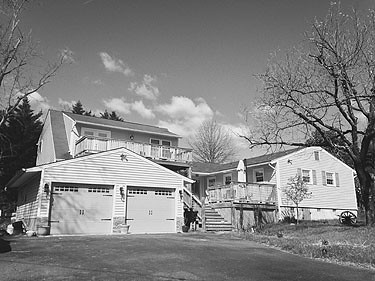
Substantial space and a garage are added to a small house. The massing is hidden in the trees and invisible from the front of the original house.
________________________________________
Staunton, Virginia Commercial Work
Enterprise Centre
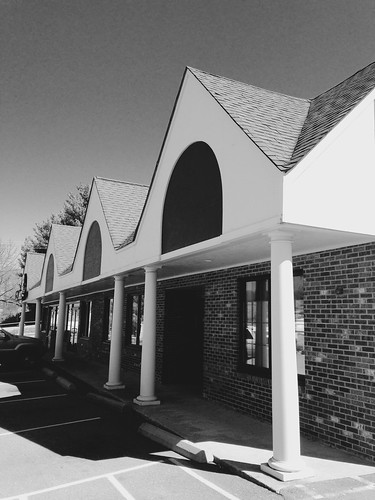

Here an old strip shopping center was given a new parapet and a new trussed roof. The original flat roof was not salvageable so it was trussed over.
Law Offices from Gas Station
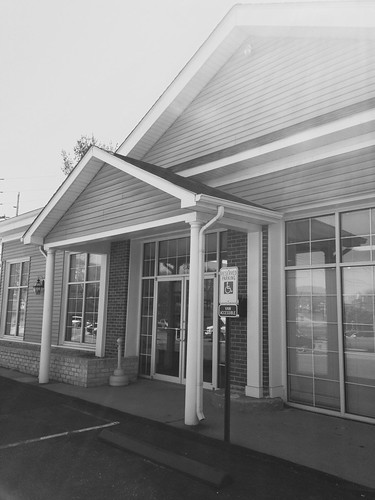
An old 'box' style gas station at the corner of Greenville Avenue and Richmond Road received a new facade and an office wing added to the rear.
________________________________________
Creating Connection with History
A Sense of Place

Stonework on the facade creates a sense of connection...
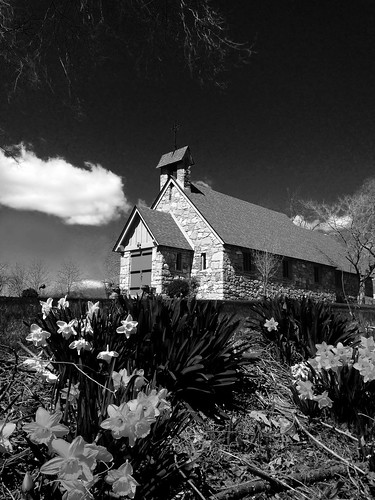
...with the historic architecture of Good Shepherd Episcopal Church by the firm of T. J. Collins.
Copyright © 2017, The Kirchman Studio, all rights reserved.
Building Bridges II
If my people, which are called by my name, shall humble themselves, and pray, and seek my face, and turn from their wicked ways; then will I hear from heaven, and will forgive their sin, and will heal their land.” – 2 Chronicles 7:14
Our nation needs healing. I really believe that most people want healing. This Scripture is a wonderful blueprint for beginning the hard work of true change and healing. It begins with a change that is inward. Humility and reliance on the Divine happen in the quietness of heart that is not so easily seen – until it results in change. We turn from our old ways. We learn how to respect people because we learn how to see IMAGO DEI, the fact that they are made in the image of G-d! The important thing here is that old prejudices cease to inform our reactions, rather our actions are informed by our knowledge of G-d.
We need to look to the example of Angus Buchan in South Africa. He brought people together not to protest, but to pray. When Buchan began his ministry, his country sorely needed reconciliation and rain. Angus gathered people to pray for both.
The Scripture concludes with the wonderful promise that the Divine will indeed hear from Heaven. He will forgive our sin. He will heal our land. If I have but a small shard of Faith in a Loving Divine, don’t I want to see that come to pass?

Magic Garden Morning.
Once, I looked up and I saw Heaven, a world above me brightly shining. My heart cried for wings. I looked around me and saw pain and suffering. The world was grey. I looked down and I saw a child with tear stained cheeks I reached out and grabbed his hand he looked at me and smiled. I saw a flower bloom red and full of life. The child picked the red flower and turned to his mother. She stood alone sad and cold. The child gave the red flower to his mother and her hard face softened I looked and saw a blue rippling stream. The mother saw an old crippled man, who could not move his legs to get a drink. She carried the man to the stream and gave him water to drink. He cried tears of joy. I saw a yellow bird sing. The old crippled man learned the yellow bird’s song and shared it with all he could see and everyone who heard it would feel happy. I saw rainbows shoot across the sky. I went on my way reaching out, feeding the hungry, clothing the naked, caring for the sick, seeing for the blind, hearing for the deaf, befriending the friendless, singing to bring happiness, and loving the loveless. Then one day I looked back and realized I had wings all along. My wings had been the love reached out to heal others who were broken. My heart burst with joy.
-- Kristina Elaine Greer
The Road Less Traveled
A Story of Gracefully Overcoming Barriers
I shall be telling this with a sigh
Somewhere ages and ages hence:
Two roads diverged in a wood, and I—
I took the one less traveled by,
And that has made all the difference.”
– Robert Frost
In the past months a truly great film was released. Hidden Figures tells the story of three very real women who faced some very real obstacles. Katherine Johnson, Mary Jackson and Dorothy Vaughan were ‘computers.’ In the days before machines, humans performed the calculations for engineering departments. My mother did similar work at the Martin Company in the 1940’s. Remembering conversations with Mom, I am pretty sure she knew about these women who worked at Langley.
They were recruited from the ranks of highly talented mathematicians. Had they not been tapped to go into engineering departments, they would have likely spent their entire careers as schoolteachers. But since male engineers hated the large task of performing calculations, they were happy to assign the task a ‘clerical’ role and bring in the ‘computers.’
Langley was unique in that its position in high speed aircraft research created an unusual demand for these talented people and they couldn’t find enough of them. Here is where the door of opportunity opened when Langley created its ‘Colored Computer Division.’ They recruited black women with strong mathematics backgrounds and as they transitioned into a space agency, these women broke all kinds of barriers.
Katherine Johnson calculated trajectories for Mercury, Gemini and Apollo. Dorothy Vaughan became NASA’s first African-American woman supervisor, overseeing the operations of Langley’s large IBM computer. Mary Jackson pushed the boundaries to become NASA’s first Black woman engineer. She went to night school and had to seek permission to attend the classes which were held in an all-white high school.
Author Margot Lee Shetterly discovered the stories of these women through church circles. She knew them growing up as members of her church. There were a lot of people in her community of Hampton who worked at NASA but she did not know how amazing their stories were. Shetterly does all of us a great service by giving them a proper place in history. They need to serve as an inspiration to all young people.
Rage is All the Rage
...and the middle classes love it
By Cosmo Landesman
[click to read]
Last weekend, I got into a conversation with the son of an old friend. He’s a nice middle-class boy, mid-twenties, who plays in a band and has lots of tats and piercings. We got into a conversation about summer festivals. I was telling him about a wonderful one I’d been to — the Curious Arts Festival — and then I asked him, ‘You been to anything exciting?’ ‘Yeah,’ he said with a grin, ‘I went to a riot in east London.’ (read more)
Frederick Douglass Remembered
By Breana Noble
[click to read]
Frederick Douglass returned to Hillsdale College permanently on Friday.
College President Larry Arnn unveiled the “fierce,” 7-foot-tall bronze statue of the famous freed slave and abolitionist orator — who spoke at the college on Jan. 21, 1863 — to a standing ovation of around 300 college students, staff, faculty, and visitors packed into Kresge Plaza between Lane and Kendall halls.
We think of him as a wrathful man too much,” Arnn said. “Really, he was a persuasive, thinking, talking man…[The statue] shows the emotion that drove that man, and that emotion was not hate. That emotion was love.” (read more)
Responding to Darkness with the Light
A G-dly Response to Racism and Hatred
By John Stonestreet
[click to read]
The nation is reeling from Saturday’s chaos in Charlottesville. The Church cannot sit this one out.
The book of Revelation, chapter 7, gives us an extraordinary vision from God of the Kingdom of Heaven in its fullness: “a great multitude … from every nation, tribe, people and language, standing before the throne of God and before the Lamb. They were wearing white robes and were holding palm branches in their hands. And they cried out in a loud voice: ‘Salvation belongs to our God/who sits on the throne/and to the Lamb.’”
What we saw this past weekend in Charlottesville was the exact, fiendish opposite. Crowds filled with hate, bent on violence. We saw not dazzling robes of white washed in the blood of the lamb, but the stains of red from human blood spilled in demonic anger.
I learned of what happened Saturday afternoon after landing in the Dominican Republic, where I’ll be teaching this week. Yesterday on BreakPoint, we promised part two of our series on the American suicide epidemic, and we will pick that up tomorrow. But today, facing the specter of racism in our country, it’s time for moral clarity.
And here it is: As my BreakPoint co-host Eric Metaxas tweeted over the weekend, racism is the very antithesis of the love of Jesus for all. I’ll expand on that thought: every racist ideology, including the white nationalism and neo-Nazi rhetoric and images displayed by the so-called alt-right in Charlottesville, is rooted in the pit of hell. There’s no defending it. It’s not Christian. It’s not American. And it ought not even be associated with conservatism. (read more)
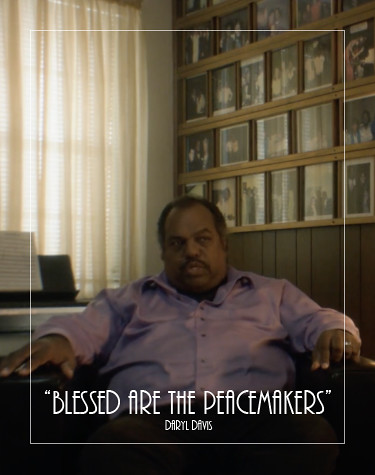
Volume XIII, Issue VIIa
Daryl Davis's Unique Work
By Benny Johnson
[click to read]
There are many headlines in the news today about fighting white supremacy and the Ku Klux Klan with violence.
However, decades ago 58-year-old Blues musician Daryl Davis learned the most effective way to get a Klansman to give up his hood: friendship.
Daryl Davis has a unique hobby.
In his spare time, he befriends white supremacists. Lots of them. Hundreds. He goes to where they live. Meets them at their rallies. Dines with them in their homes. He gets to know them because, in his words, “How can you hate me when you don't even know me? Look at me and tell me to my face why you should lynch me.” (read more)
